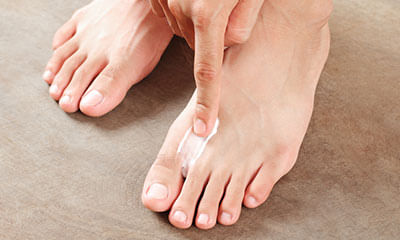Foot Drop
To avoid dragging the toes, people with foot drop may lift their kneehigher than normal. Or they may swing their leg in a wide arc.
Foot drop can happen to one foot or both feet at the same time. It can strike at any age.In general, foot drop stems fromweakness or paralysis of the muscles that lift the foot. It can have many different causes. Treatments for foot drop vary according to the cause. Most common causes and treatments for foot drop.
What causes foot drop?
- Foot drop is a symptom of an underlying problem, rather than a disease itself. It can be temporary or permanent. Causes of foot drop include:
- Nerve injury
- Brain or spinal disorders
- Muscle disorders
Here's some more detail on these causes:
Nerve injury. Most commonly, foot drop is caused by an injury to the peroneal nerve. The peroneal nerve is a branch of the sciatic nerve that wraps from the back of the knee to the front of the shin. Because it sits very close to the surface, it may be damaged easily.
An injury to the peroneal nerve may also be associated with pain or numbness along the shin or the top of the foot.
Some common ways the peroneal nerve is damaged or compressed include:
- Sports injuries
- Diabetes
- Hip or knee replacement surgery
- Spending long hours sitting cross-legged or squatting
- Childbirth
- Time spent in a leg cast
- Injury to the nerve roots in the spinemay also cause foot drop.
- Brain or spinal disorders. Neurological conditions can contribute to foot drop. These include:
- Stroke
- Multiple sclerosis (ms)
- Cerebral palsy
How do doctors treat foot drop?
Treatment for foot drop will depend on the cause. Early treatment may improve chances of recovery.
Treatments may include:
- Lightweight braces
- Shoe inserts (orthotics)
- Physical therapy
- Surgery
- Lightweight braces are the most common treatment. They're used to support the leg.
- Physical therapy is used to strengthen foot and leg muscles. It may improve a person's ability to walk. In some cases, electronic devices that stimulate the leg nerves during walking may be appropriate.
- Surgery may be recommended to try to repair or decompress a damaged nerve. In cases where foot drop is permanent, surgery to fuse the foot and ankle joint or to transfer tendons from stronger muscles may help improve gait and stability
Foot drop, sometimes called" drop foot" is the inability to lift the front part of the foot. This causes the toes to drag along the ground while walking.To avoid dragging the toes, people with foot drop may lift their kneehigher than normal. Or they may swing their leg in a wide arc.Foot drop can happen to one foot or both feet at the same time. It can strike at any age.In general, foot drop stems fromweakness or paralysis of the muscles that lift the foot. It can have many different causes. Treatments for foot drop vary according to the cause. Most common causes and treatments for foot drop.



+1.svg)
